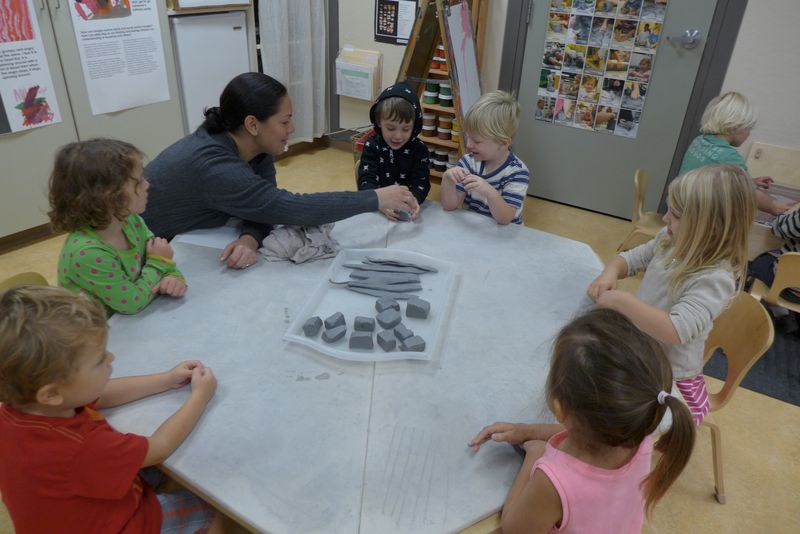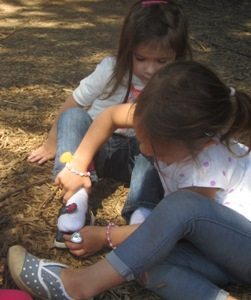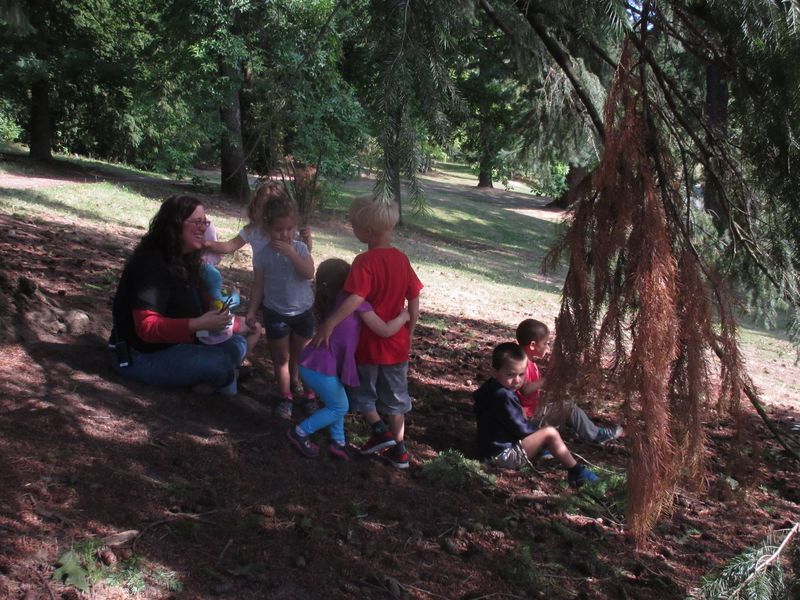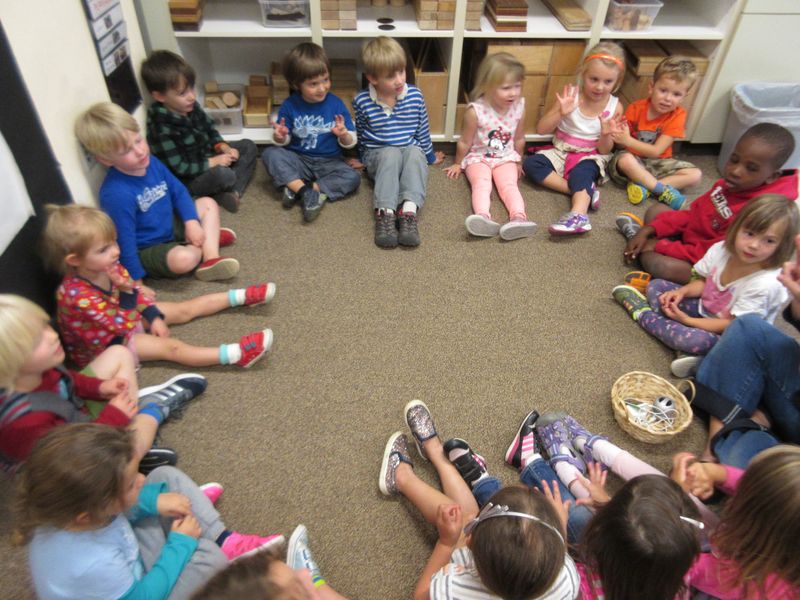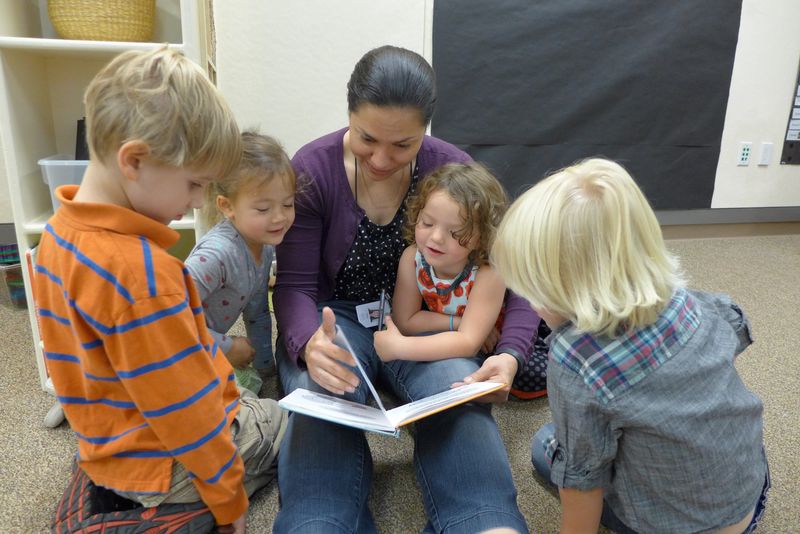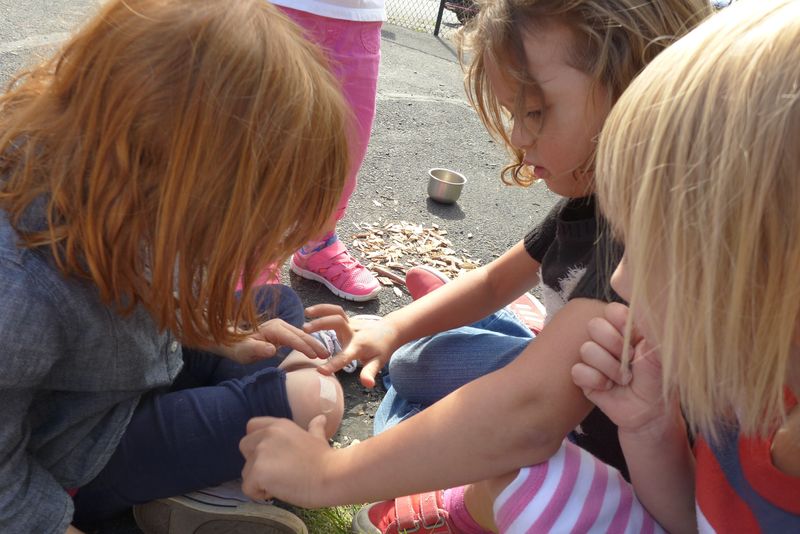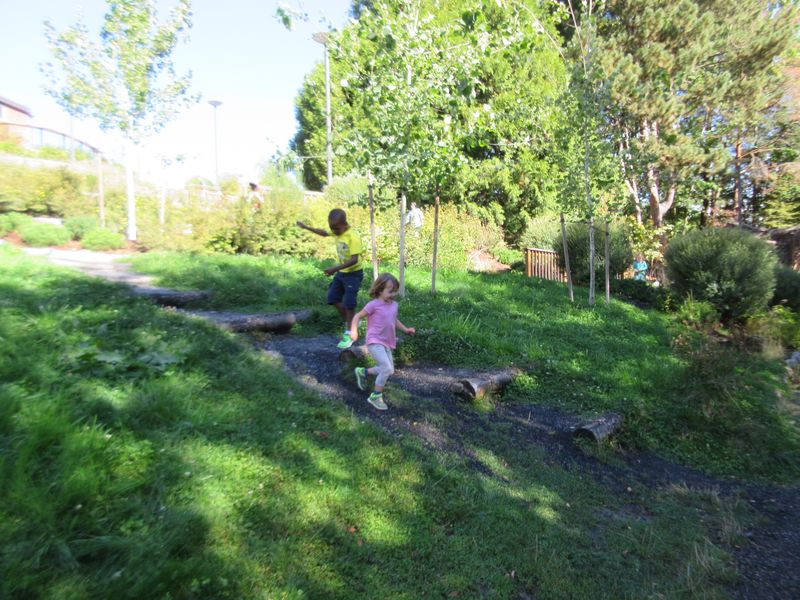A Community in the Making
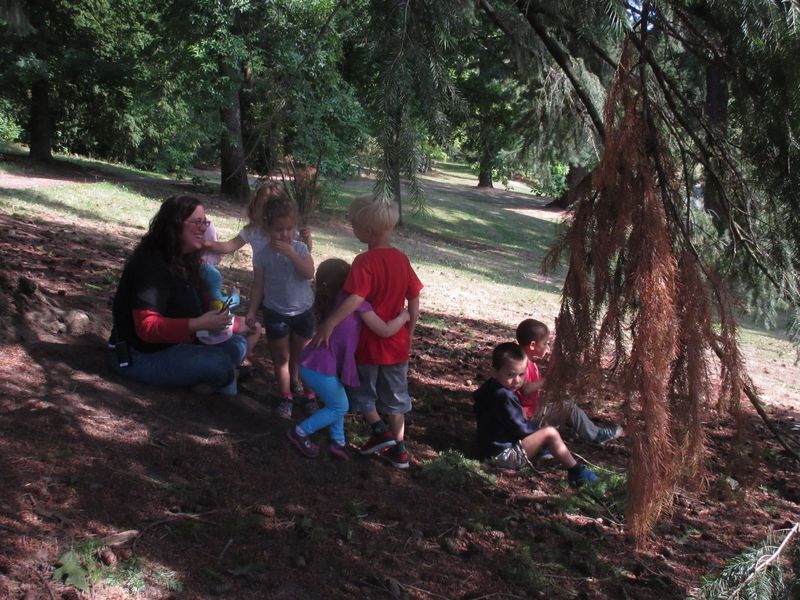
For many young children, preschool is their first experience in being a part of a community outside of their family community. In bringing a group of people together, it offers opportunities to connect and to encounter a diverse array of ways of being and approaching the world. It also offers children endless opportunities to deepen and broaden their understandings of the world.
Each child enters the classroom attached to all of the stories of their life. These stories and experiences have shaped their unique perspectives and understandings of the world thus far. As these are in continual development, these understandings can be described as “working theories” of the world. School offers rich opportunities to have one’s “working theories” bump up against another’s. Children’s working theories only become more developed, complex, and connected through these daily encounters in school and out in the world.
Last week I read an exciting article entitled “Thriving in College: The Power of Relationships” on Huffington Post written by Adam Weinberg, President of Denison University that touches on these ideas. I want to just take a moment to pull out one big idea from the article that is so connected to the work at Opal School. I would like to suggest reading the sentence as written in the article, but then re-reading it and replacing the word campus with classroom.
“We need to treat the campus as a place where students build, govern and sustain community.”
At Opal School, children are at the heart of the learning community. They are building, governing, and sustaining the learning community with every encounter. We believe that school is a place where we all get to practice humanity and imagine new possibilities for how to contribute to – and thrive in – a learning community. Daily, we have opportunities to share ideas and resources, uncover and challenge each other’s assumptions, experience a wide range of emotions, practice empathy, solve problems, and imagine new possibilities for how to think and thrive in our world. School is a mirror of life in this way.
In the article, Weinberg describes what we believe to be true about conflict: that it is a great opportunity for learning. Because conflict is often that place where differing working theories are bumping up against one another, our role as teachers is to listen for these moments and help children to slow down and ask questions of one another to gain deeper understanding of each person’s perspective.
Although we believe that all people have the best of intentions and are bringing the best that they can to each encounter, we recognize that things can get in the way of being the best that that person brought to the encounter. This is where “oopsies” come in. We all will inevitably make oopsies, misfires at connection or communication, problem-solving, or getting our needs met. Our role as teachers is to normalize oopsies and see them as opportunities for learning and growth for everyone. Reflecting on the experiences can support everyone to uncover one another’s assumptions and working theories of the world and how to all come away with a richer understanding of one another’s perspectives, as well as our own, and awareness that in so doing, how we are creating shared meaning as a community, which ultimately strengthens our community.
As we discussed at last Friday’s Curriculum Meeting, we are not trying to create a classroom environment that is free of conflict: that is not real life. What we are trying to communicate is that it is likely that each of us will make oopsies, but we can reflect on them and learn another way for next time, and that no one will define you by your oopsies. So we ask ourselves: What is the teacher’s role in creating a learning community? I am reminded of the wisdoms of the Reggio educators who propose not to teach children what they can discover for themselves. But I do not mean to imply that we do not still have a critical role in the classroom. Our role is to pay close attention to how the children are connecting with one another, with the environment and materials and with ideas, and to offer them contexts that will facilitate their learning.
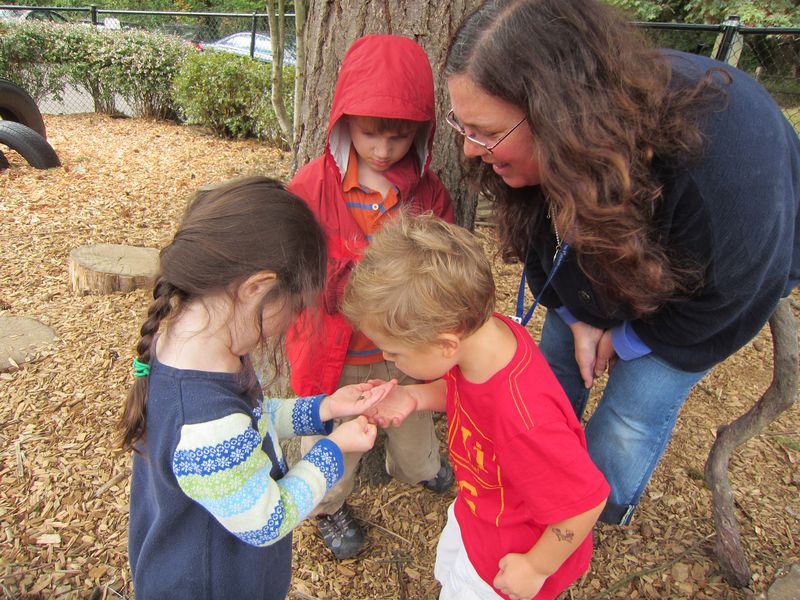
In the drafting of this post, I realize that these ideas continue to hold strong personal meaning to me as I reflect on my own journey as a parent this fall, having recently dropped my son off at college for the first time. I realized that I found myself with so many of the same questions that I had when he was three years old and I was dropping him off at preschool for the first time. It made me smile and I felt grateful to be experiencing this connection back to that time in his life. Not only because it gave me an opportunity to reflect on how much had happened in fifteen short years, but mostly, it offered me such an important reminder of what so many parents and children are wondering with starting preschool.
- Will he connect with peers?
- Will he enjoy himself?
- Will his teachers take the time to get to know him and all of his gifts?
- Will he be in an environment where he can feel challenged and safe to take the risks needed to grow?
- Will he know how to take care of what he needs and be comfortable asking for help?
- Will he be in a place where he can experience being part of something bigger than himself and beyond his family?
I also wondered…
- What will he learn about himself through this experience?
- What will capture his attention and tickle his imagination and curiosity?
- How will he grow from encountering diverse perspectives and ways of being in the world?
And certainly at the forefront of these wonderings are…
- Will I make friends?
- Will I feel a sense of belonging?
As teachers, we are paying attention to these questions and the children’s working theories that they are continuing to build around them. Below are a few images from the Cedar classroom that we have captured of children’s connections with one another, with the materials and environment and with ideas, as we begin our journey together with all of these ideas in mind of building a learning community together.
There Is a Bird on Your Head–Mo Willems
I Love my New Toy!– Mo Willems
A Big Guy Took My Ball–Mo Willems
Knuffle Bunny–Mo Willems
Ladybug Girl and Bumble Bee Boy–by Jackie Davis and David Soman
Beautiful Oops–Barny Saltzberg
Rolle Polie Olie–William Joyce
I’m Sorry–Sam McBratney and Jennifer Eachus
Seven Blind Mice–Ed Young
Jamaica’s Find–Anne Sibley O’Brien
Betty Goes Bananas–Steven Antony
Little Owl Lost–Chris Haughton

